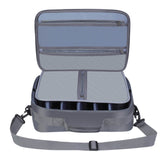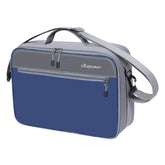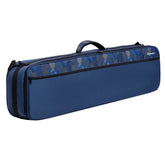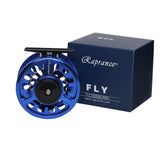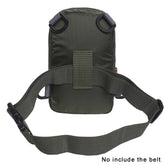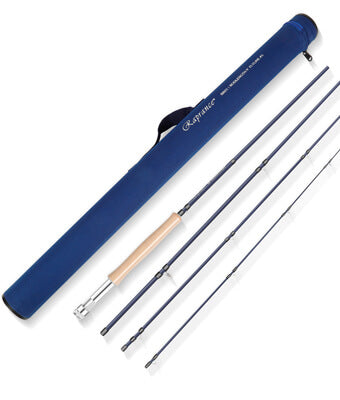How to choose a fly fishing pack?
Fly Chest Pack, Fly Sling Pack, Fly Hip Pack, and Fly Vest Pack: Choosing the Right Gear for Your Fishing Adventure
When it comes to fly fishing, choosing the right gear can significantly enhance the experience. I often find myself weighing the benefits of various options like the fly chest pack, fly sling pack, fly hip pack, and fly vest pack. Each of these packs offers unique features tailored to different fishing styles and preferences, making it essential to understand their advantages.

In my experience, a fly chest pack provides easy access to essential tools, while a fly sling pack offers a balance between portability and storage. For those who prefer to keep things lightweight, a fly hip pack is an excellent choice for day trips, whereas a fly vest pack offers ample space and organization for longer excursions. Exploring these options can help you find the perfect fit for your fishing adventures.
Ultimately, selecting the right pack can streamline your fishing trips and improve your efficiency on the water. Understanding the distinct characteristics of each type will ensure you’re well-prepared for any scenario.
Overview of Fly Fishing Packs
Selecting the right fly fishing pack is crucial for organization and comfort on the water. Each pack type serves different purposes and preferences, allowing anglers to tailor their experience.
Key Differences Among Packs
Fly fishing packs come in various styles, each designed for specific needs.
- Fly Chest Pack: Offers front access to essentials. Ideal for short trips, it holds tools and flies without excess weight.
- Fly Sling Pack: Provides easy access by allowing me to swing the pack around without removing it. Its design is suitable for longer durations on the water.
- Fly Hip Pack: Sits comfortably on my waist, balancing weight while offering quick access to items. It's perfect for mobile anglers who prefer to move and cast frequently.
- Fly Vest Pack: Features multiple pockets and storage options. This traditional pack keeps gear organized and accessible, suitable for extensive fishing sessions.
Assessing Your Needs for Fly Fishing
When evaluating the best pack, I consider the nature of my fishing trips.
- Storage: Do I need ample space for gear, or am I focused on minimal essentials?
- Pockets: A good design should include dedicated compartments for tools, flies, and tippet, making organization key.
- Comfort: I assess each pack's fit and weight distribution to prevent fatigue during long outings.
Ultimately, choosing the right pack depends on my fishing style and preferences. Understanding the differences and matching them to my needs enhances my fly fishing experience.
Chest Packs: Functionality and Advantages
Chest packs are an essential piece of fishing gear for those who prefer accessibility and organization while out on the water. Designed to hold various tools and accessories, they offer a blend of convenience and hands-free functionality, making them popular among anglers.
Design and Storage Solutions
A chest pack provides ample storage, allowing me to carry a variety of items like fly boxes, leader, tippet, and floatant. The design often includes multiple pockets and compartments, ensuring that I can keep my gear organized.
Many models have adjustable straps for a snug fit, which is crucial when I’m deep wading or engaged in wet wading. The front-facing design enables easy access to my essential tools without needing to remove the pack, enhancing my fishing efficiency.
Chest packs also promote weight distribution, making them comfortable to wear during long fishing sessions. Their compact format allows me to navigate through tight spots without hindrance.
Popular Chest Pack Models
Several chest pack models stand out in the market due to their functional design and durability. For instance, the FishPond Chest Pack features ample storage tailored for fly fishing needs. Its built-in zinger and tool attachments prevent clutter and keep everything easily accessible.
Another notable option is the Orvis Safe Passage Chest Pack, known for its lightweight construction and integrated hydration sleeve. This model is suitable for all-day use, accommodating various accessories while remaining comfortable.
Both options maintain high-quality materials that withstand wet conditions, ensuring my gear remains protected. Exploring these models can simplify my choice of a chest pack that aligns with my fishing style.
Sling Packs: Combining Comfort and Accessibility
Sling packs offer a balance of comfort and accessibility, making them a popular choice for outdoor activities. Their design facilitates easy access to gear and distributes weight effectively, enhancing the user experience.
Ergonomics and Weight Distribution
A key feature of sling packs is their ergonomic design. They enable weight distribution across the back and shoulder, reducing strain during prolonged use. I find that packs with adjustable straps allow for a customized fit, preventing discomfort.
Materials used in construction often enhance comfort. Many packs incorporate breathable fabrics, ensuring airflow during activities like fly fishing. Additionally, waterproof options protect my gear from rain or splashes, which is invaluable when I’m near water.
Choosing the Right Sling Pack
Selecting the right sling pack requires assessing personal needs and preferences. I often consider size, storage options, and specific features that match my activities. For hydration, some packs come equipped with compartments for hydration bladders, which I find crucial during long outings.
Look for pockets designed for organization, as this makes access quicker and easier. A well-organized pack minimizes downtime and maximizes enjoyment. When selecting a waterproof sling, checking the material quality is essential to ensure durability in various weather conditions.
Hip and Waist Packs: Versatility on the Water

Hip and waist packs offer practical solutions for keeping essential gear easily accessible while fishing. Their design allows for a range of storage options tailored to various fishing styles and environments.
Hip Pack Features for Anglers
When looking for a hip pack, I prioritize features that enhance functionality. Essential characteristics include adjustable straps for comfort and fit, waterproof materials to protect contents, and multiple compartments for organization.
I prefer packs with attachment points for tools and gear such as tippets, clippers, and fly boxes. A popular option, the Fishpond Thunderhead Submersible Lumbar, exemplifies these features with its durable construction and ample storage.
Additionally, some hip packs include integrated hydration systems, reinforcing their utility during long hours wading in remote locations. Overall, these features significantly enhance my fishing experience by providing quick access to everything I need.
Selecting the Right Hip Pack
Choosing the right hip pack involves assessing specific needs based on my fishing habits. First, I consider the amount of gear I typically carry. For minimalists, a compact fly fishing waist pack suffices, but more extensive trips call for larger packs with additional storage.
Next, I evaluate the type of fishing I engage in. Packs designed for wading often feature water-resistant materials and better drainage systems. For rocky terrains, a waist pack with built-in support or padding can reduce strain.
I also think about weight distribution. A well-designed hip pack should balance the load comfortably along my hips, allowing for greater mobility. By identifying these factors, I can select a hip pack that meets my requirements on the water.
Integrated Systems and Vests: Comprehensive Solutions

When considering fly fishing gear, integrated systems and vest packs offer functionality and convenience. These solutions cater to the specific needs of anglers, providing ample organization and quick access to essential tools.
Advantages of Vest Packs
I find fly vest packs to be an exceptional choice for several reasons. They provide a hands-free experience while offering various pockets for organization. Key features often include:
- Multiple compartments: Ideal for storing everything from nippers to small tackle items.
- Accessibility: Allows me to reach my gear quickly without having to rummage through bags.
- Customization: Many vest packs come equipped with modular systems, letting me arrange pockets for optimal accessibility.
Wearing a fishing vest enables me to keep necessary items close at hand. For intense fishing sessions, hydration options are also sometimes integrated into these packs.
Wading System Integration
Many vest packs work efficiently alongside wading systems, enhancing my fishing experience. They often include attachments for wading staffs or net holders, allowing me to navigate rivers easily.
The integration of waders with vest packs provides:
- Stability: Having my gear attached securely means I can focus on my footing.
- Efficiency: Carrying everything in one integrated system reduces travel times to and from fishing spots.
I appreciate how these packs make organization and accessibility effortless. With the right integrated system, my fly fishing trips become smoother and more enjoyable, enabling me to focus on what truly matters: the catch.
Accessories and Additional Considerations
When preparing for a fishing trip, I emphasize the importance of suitable accessories and understanding environmental factors. This enhances my experience and ensures I’m well-equipped for various conditions.
Weather and Environmental Factors
Weather plays a critical role in fly fishing. I carry a waterproof pack to protect my gear from rain. A high-quality rain jacket is essential for staying dry and comfortable. When fishing in saltwater, I prefer fishing shirts made of quick-drying materials to maintain comfort throughout the day.
Temperature and wind can affect fish behavior, so I always check forecasts before heading out. Using indicators, like strike indicators or tippet spools, helps detect fish activity in changing conditions. The Fishpond Thunderhead is an excellent choice for durability and organization.
Maintenance and Care
Proper maintenance of my fishing packs ensures longevity. I clean my gear regularly, focusing on zippers and pockets to prevent salt and sand buildup, especially after saltwater trips.
For waterproof packs, I inspect seams and reapply waterproofing treatments as needed. During off-seasons, I store my fishing packs in a cool, dry place to prevent mold and degradation. Investing in quality items from brands like Simms Freestone or Orvis Pro can enhance durability, making care simpler.

